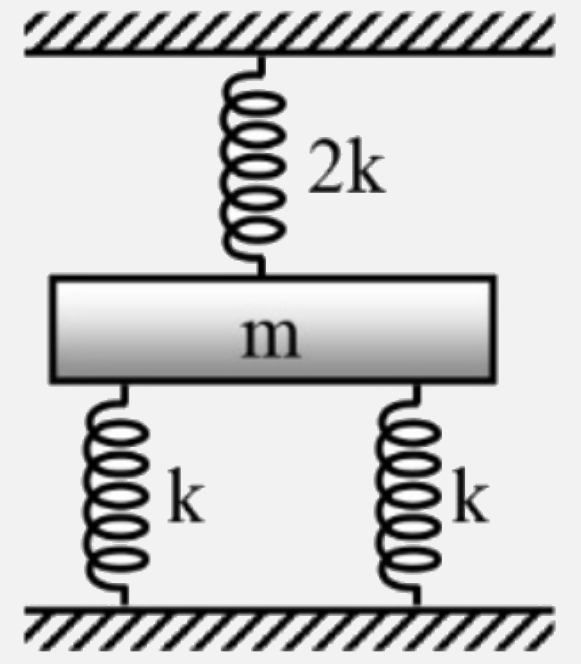Define spring constant or force constant.
Step-by-Step Solution:
1. Understanding the Concept: The spring constant, also known as the force constant, is a measure of the stiffness of a spring. It quantifies how much force is needed to stretch or compress the spring by a certain distance.
2. Hooke's Law: According to Hooke's Law, the restoring force (F) exerted by a spring is directly proportional to the displacement (x) from its equilibrium position. This relationship can be expressed mathematically as:
F∝−x
3. Mathematical Expression: To convert the proportionality into an equation, we introduce a constant of proportionality, which is the spring constant (k). This gives us:
F=−kx
Here, the negative sign indicates that the direction of the restoring force is opposite to the direction of the displacement.
4. Defining the Spring Constant: The spring constant (k) can be defined as the ratio of the restoring force to the displacement:
k=−Fx
If we consider a unit displacement (x = 1), then the spring constant can be simplified to:
k=−F(for unit displacement)
5. Conclusion: Therefore, the spring constant (k) is a measure of how much force is required to stretch or compress a spring by one unit of distance. A higher value of k indicates a stiffer spring, while a lower value indicates a more flexible spring.
---
F∝−x
F=−kx
Here, the negative sign indicates that the direction of the restoring force is opposite to the direction of the displacement.
k=−Fx
If we consider a unit displacement (x = 1), then the spring constant can be simplified to:
k=−F(for unit displacement)
Topper's Solved these Questions
- OSCILLATIONS BOOK - ICSECHAPTER - OSCILLATIONS EXERCISE - VERY SHORT ANSWER QUESTIONS
13 Videos
- OSCILLATIONS BOOK - ICSECHAPTER - OSCILLATIONS EXERCISE - SELECTED PROBLEMS (FROM THE CHARACTERISTIC OF SHM)
14 Videos
- OSCILLATIONS BOOK - ICSECHAPTER - OSCILLATIONS EXERCISE - LONG ANSWER QUESTIONS
3 Videos
- MOTION IN FLUIDS BOOK - ICSECHAPTER - MOTION IN FLUIDS EXERCISE - SELECTED PROBLEMS (FROM POISEUILLE.S FORMULA)
19 Videos
- PROPERTIES OF MATTERBOOK - ICSECHAPTER - PROPERTIES OF MATTEREXERCISE - MODULE 4 ( TEMPERATURE ) UNSOLVED PROBLEMS
12 Videos
Similar Questions
Knowledge Check
A 15gm ball is shot from a spring whose spring has a force constant of 600N/m. The spring is compressed by 5cm. The greatest possible horizontal range of the ball for this compression is
A6 mB8 mC10 mD12 m
A block of mass m is connected to another .block of mass M by a massless spring of spring constant k. A constant force f starts action as shown in figure, then:

View SolutionDefine decay constant
View SolutionDefine cryoscopic constant.
View SolutionInfinite springs with force constantk , 2k, 4k and 8 k .... respectively are connected in series. The effective force constant of the spring will b
View SolutionA block of mass m is suspended by different springs of force constant shown in figure.

View SolutionInfinite springs with force constants k,2k, 4k and 8k … respectively are connected in series. What will be the effective force constant of springs, when k=10N/m
View SolutionWhat is the spring constant for the combination of shown in figure ?

View Solution